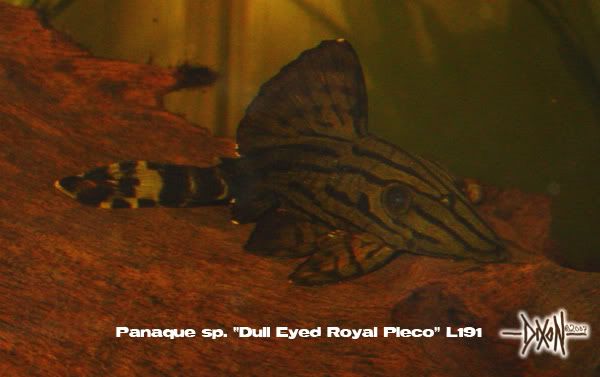'I am looking to get a wood eating plec but want to clarify if it is bogwood that I have to have, As I have already in the tank loads of molpani root and i do not want to go for months again with yellow water
Thank you


Hi Ian,Coryman wrote:My point is, that using the very hard woods as a part of a food sauce for wood eating species is not in the best interest of the fish, because such woods will create faster degeneration of the teeth and as these fish only produce a limited number during their life-span, will effectively shorten their lives.
Ian
I'm going to say this:Seedy wrote:Ian, I'm sure this has probably been covered elsewhere, but what soft woods would you specifically recommend that can be found in easily here North America?
On my property I have access to:
Pecan,
Willow,
Maple,
Cottonwood (I'm sorry these are common names but I know jack-squat about botanyunce: )
Creppemyrtle bush
Mulberry
Pine (I don't know species)
Magnolia tree
I am not sure this is true as I have caught as many panaque around submerged hardwood trees as anything else. Nearly all the canoes in South America are made from some type of hardwood (not many softwood trees like pines in the jungle) and there is a reason they call panaque "coma canoa" (canoe eaters). They will chew a hole through the canoe's hull, even if it is made of mahogany.My point is, that using the very hard woods as a part of a food sauce for wood eating species is not in the best interest of the fish, because such woods will create faster degeneration of the teeth and as these fish only produce a limited number during their life-span, will effectively shorten their lives.
It might seem logical, but it is incorrect. Extensive gut content analysis show that wild panaque have only one thing in their gut: wood. Not algae, not micro-organisms, not sponges, not insects, just wood. Captive experiments have confirmed this. Panaque kept in a dark tank (to prevent algae growth) and given only wood to eat will grow as fast or faster than panaque fed aquarium foods, veggies, etc. Variety is not the spice of life for panaque. They just want wood. A panaque species tank with lots of wood would never need to be fed. It just needs a lot of water changes to keep the sawdust under control!It makes more sense to me that in nature the Panaques have evolved to eat the rotting wood to extract the organisms that permeate it.
Whilst mahogny certainly isn't a soft wood (compared to pine, spruce or balsa), it's actually not very hard either, when it comes to hardwoods. For example oak, I would classify as harder (and mopani is harder too). This is based on my experience from woodworking at school, where we used mahogny for certain types of work.Shane wrote:They will chew a hole through the canoe's hull, even if it is made of mahogany.
Mats, Shane and all the everyone else who has contributed, I have found this to be an extremely helpful and informative thread.MatsP wrote:Shane wrote: I'm pretty certain that Panaque will eat just about any type of wood, which was essentially what I said in my first post in this thread.
--
Mats